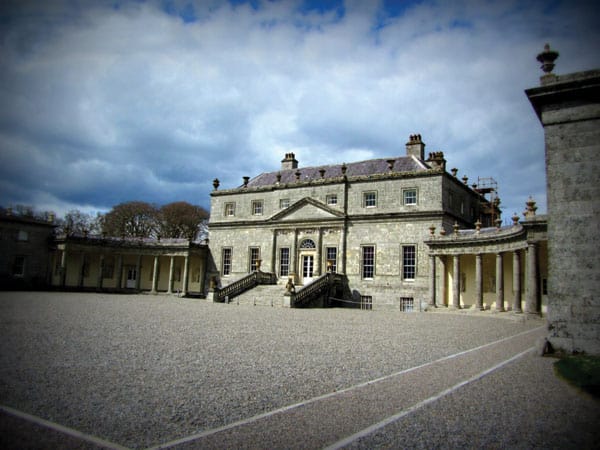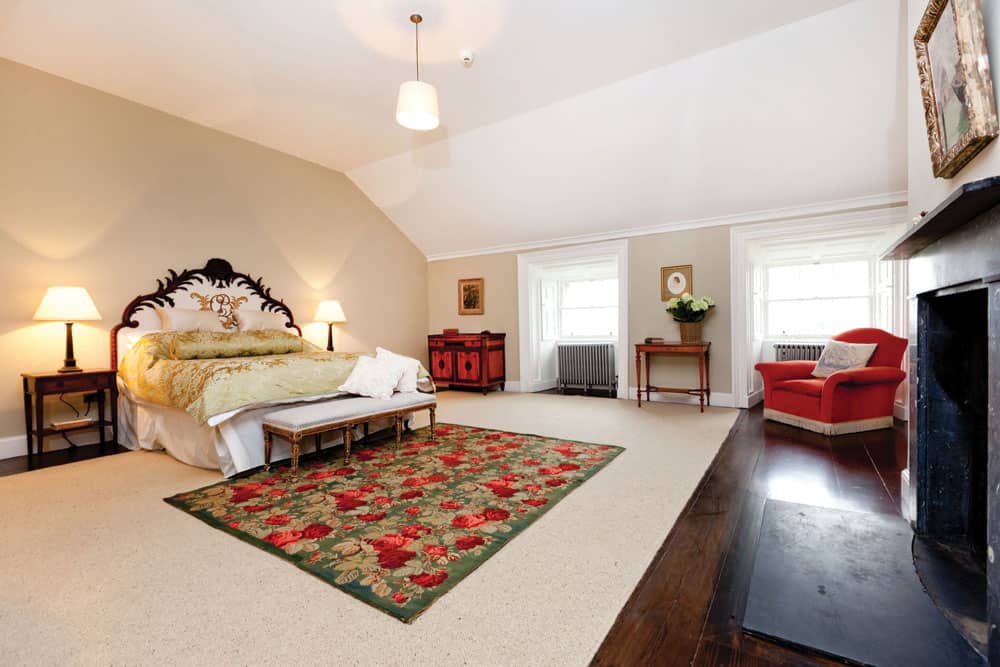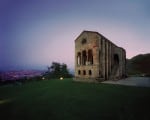Niamh Mac Sweeney opens the doors to 10 of the Landmark Trust’s most iconic properties, and finds they are ideal for unique family holidays or cosy couples’ retreats.
Beit Residence
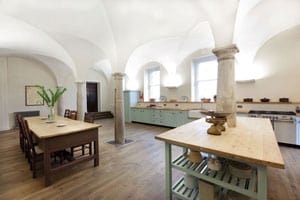 Housed within the west wing at Russborough House, the Beit Residence and Garden Apartment sits majestically in a spectacular setting with magnificent views of the Blessington Lakes and the Wicklow Mountains.
Housed within the west wing at Russborough House, the Beit Residence and Garden Apartment sits majestically in a spectacular setting with magnificent views of the Blessington Lakes and the Wicklow Mountains.
Steeped in history and heritage, Russborough House has had a colourful and opulent past and it was in the west wing that Sir Alfred and Lady Beit lived their final years.
Each apartment’s decor is exceptionally done and Beit family photographs, furniture and artifacts adorn the dining room and drawing room, depicting the way that life was lived at Russborough and the deep rooted history of the estate.
Visitors staying at the Beit Residence can languish in the lap of luxury in one of the two double bedrooms or in the two separate twin rooms.
And whether dining or relaxing in the formal dining room or drawing room, or cooking up a feast in the large spacious kitchen – which is fully equipped with all mod cons – this ample residence has all the old world charm one would expect from a house steeped in heritage but with all of the modern conveniences one comes to expect in the modern age.
Blackhead Lighthouse
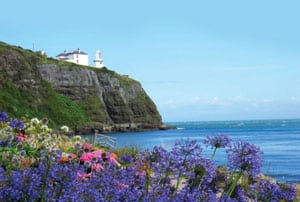 Sleeping five, Blackhead Lighthouse in Whitehead Co. Antrim, is ideally situated on the north shore of Belfast Lough. Cliff-facing and with stunning panoramic views, visitors can either sit back, relax and take it all in from the comfort of this stunning property, or venture out along the many coastal routes that lead to the Victorian town of Whitehead.
Sleeping five, Blackhead Lighthouse in Whitehead Co. Antrim, is ideally situated on the north shore of Belfast Lough. Cliff-facing and with stunning panoramic views, visitors can either sit back, relax and take it all in from the comfort of this stunning property, or venture out along the many coastal routes that lead to the Victorian town of Whitehead.
Local attractions: Carrickfergus Castle; Andrew Jackson Centre at Carrickfergus; Antrim Castle and Gardens; Belfast Zoo; the fishing village of Carnlough; The Giant’s Causeway.
Loop Head Lighthouse
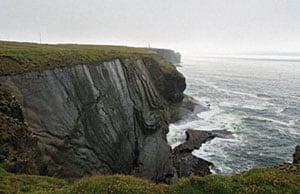 Built on a cliff top with views of the sea down to Kerry Head and Dingle, across the Shannon and up the Clare coast to the Cliffs of Moher, Loop Head Lighthouse station is a major landmark on the northern shore of the Shannon River.
Built on a cliff top with views of the sea down to Kerry Head and Dingle, across the Shannon and up the Clare coast to the Cliffs of Moher, Loop Head Lighthouse station is a major landmark on the northern shore of the Shannon River.
Although the lighthouse is relatively remote, Kilbaha village is only three miles away and the Aran Islands are accessible daily by boat from Doolin. Golf, pitch and putt, fishing, horse-riding, watersports, and hill-walking are all readily available for the active tourist.
Local attractions: Aillwee Caves; Cliffs of Moher; Bunratty Castle and Folk Park; The Burren Centre; Craggaunowen Living Past Experience; Glór Irish Music Centre.
Batty Langley Lodge
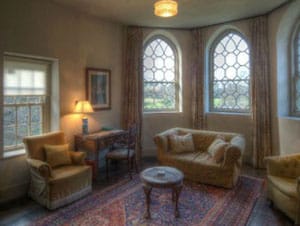 Sitting on the edge of the estate surrounding Castletown House in Celbridge, Batty Langley Lodge – with its distinctive gothic pinnacles and half-octagonal façade – was created by garden designer and writer, Batty Langley in the 17th century.
Sitting on the edge of the estate surrounding Castletown House in Celbridge, Batty Langley Lodge – with its distinctive gothic pinnacles and half-octagonal façade – was created by garden designer and writer, Batty Langley in the 17th century.
The lodge’s idyllic setting on the banks of the River Liffey, allows visitors to use the extensive grounds and parklands of Castletown House.
Whether fly fishing on the river that runs in front of the lodge or enjoying one of the many events hosted at the main house, this is the perfect hideaway retreat to relax and recharge. Located less than an hour from Dublin city, getting away from it all couldn’t be easier.
Local attractions: Donadea Forest; Punchestown race course; Oughterard and Taghadoe round tower; the Museum of Icons at Newbridge Silverware.
Galley Head Lightkeepers’ Houses
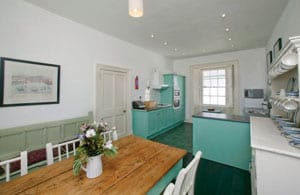 Perched on dramatic cliffs, elevated 130ft above sea level and overlooking St George’s Channel in Cork, Galley Head Lightkeepers’ Houses offers sumptuous living in a spectacular seascape setting. Guests can enjoy the charms of Clonakilty which is close by, and the wide range of activities on offer from dolphin and whale watching to surfing at Inchydoney Beach.
Perched on dramatic cliffs, elevated 130ft above sea level and overlooking St George’s Channel in Cork, Galley Head Lightkeepers’ Houses offers sumptuous living in a spectacular seascape setting. Guests can enjoy the charms of Clonakilty which is close by, and the wide range of activities on offer from dolphin and whale watching to surfing at Inchydoney Beach.
Local attractions: Old Head Golf Course; West Cork Model Railway Village; Inchydoney Spa; Michael Collins Centre; West Cork Surf School.
The Barbican
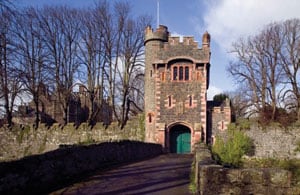 Ideally located along Antrim’s Glenarm River, The Barbican was built in 1825 in one of Ulster’s oldest villages. This medieval miniature castle is a perfect romantic hideaway retreat where guests can gain a unique insight into the past.
Ideally located along Antrim’s Glenarm River, The Barbican was built in 1825 in one of Ulster’s oldest villages. This medieval miniature castle is a perfect romantic hideaway retreat where guests can gain a unique insight into the past.
Steeped in history, it was on nearby Glenarm’s beach that ancient flint tools between four and five thousand years old were raised by a Harvard archeological expedition in 1934.
Originally built as a simple Palladian building, in 1823 the McDonnell family commissioned architect, William Morrison, to improve the property. Morrison transformed the building into a fortified gatelodge with battlements and towers, and today visitors can enjoy the historic Walled Garden, the charming Tea Room or the International Highland Games which take place each year in July.
Local attractions: The Giant’s Causeway; Bushmill’s Distillery; Antrim Glens; costal walks; Belfast city.
Tullymurry House
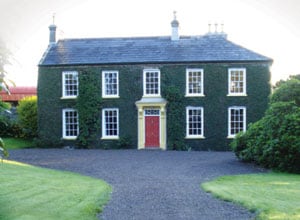 Tullymurry House in Co. Down is the ideal holiday house for groups and families as it has ample space with two double bedrooms, a twin and two single rooms. This historic and traditional Irish country house has stunning gardens and the surrounding parklands overlook the Mourne Mountains.
Tullymurry House in Co. Down is the ideal holiday house for groups and families as it has ample space with two double bedrooms, a twin and two single rooms. This historic and traditional Irish country house has stunning gardens and the surrounding parklands overlook the Mourne Mountains.
There are ample opportunities to relax in the garden, and also the option to avail of the Spa and wellness area at the main house. With so many activities right on the doorstep, including golf, sailing, walking and equestrian, finding time to do nothing might be visitors’ greatest challenge.
Local attractions: Newry Museum; Mullaghbane Folk Museum, Burren Heritage Centre.
Termon House
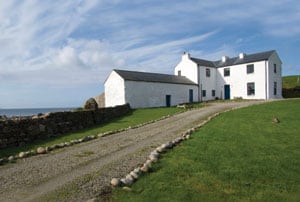 Dating back to the 1700s, Termon House is situated on the seashore of a remote Donegal peninsula Maghery, near Dungloe. Located in the heart of the Gaeltacht area, it is this remoteness that makes Termon House an ideal escape from city life especially as the Atlantic sea crashing off the rocks is often the only sound to be heard there.
Dating back to the 1700s, Termon House is situated on the seashore of a remote Donegal peninsula Maghery, near Dungloe. Located in the heart of the Gaeltacht area, it is this remoteness that makes Termon House an ideal escape from city life especially as the Atlantic sea crashing off the rocks is often the only sound to be heard there.
A mecca for golfers, anglers, walkers and equestrian enthusiasts, visitors are spoilt for choice with Glenveagh National Park; two of the highest mountains in the county – Errigal and Slieve Sneacht; and Lough Veagh for fishing, all within close reach.
Local attractions: Glenveagh National Park; Dunlewey Outdoor Centre; Glebe House Gallery; Tory Island; Donegal Castle.
Salterbridge Gatelodge
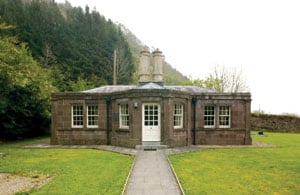 Built in 1849 by the Chearnley family and located in the Blackwater Valley of Cappoquin, Co. Waterford, Salterbridge Gatelodge’s octagonal entrance hall, known as the ‘Garden Room’, is among one of its most interesting features. Equally, the main bedroom and the sitting room, create a cosy atmospheric oasis of calm and relaxation.
Built in 1849 by the Chearnley family and located in the Blackwater Valley of Cappoquin, Co. Waterford, Salterbridge Gatelodge’s octagonal entrance hall, known as the ‘Garden Room’, is among one of its most interesting features. Equally, the main bedroom and the sitting room, create a cosy atmospheric oasis of calm and relaxation.
Local attractions: Lismore Heritage Centre and Castle Gardens; Waterford Glass Visitors Centre; Mount Melleray Abbey; Glenshelane Forest Trail.
Wicklow Head Lighthouse
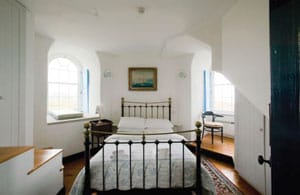 Originally built in 1781, Wicklow Head Lighthouse was acquired by the Irish Landmark Trust in 1996. Restoration work saw six octagonal rooms carefully constructed in the void that existed within the tower. The arched windows offer spectacular views out to sea and across the Wicklow countryside, or as it is known – ‘The Garden of Ireland’.
Originally built in 1781, Wicklow Head Lighthouse was acquired by the Irish Landmark Trust in 1996. Restoration work saw six octagonal rooms carefully constructed in the void that existed within the tower. The arched windows offer spectacular views out to sea and across the Wicklow countryside, or as it is known – ‘The Garden of Ireland’.
Although there is a wonderful feeling of isolation, the lighthouse is easy to get to with Dublin city less than an hour away. Whether trekking in the mountains and woodlands, enjoying the fine beaches on the east coast, or travelling further afield to the scenic valley of Avoca, there is much to do and see – all of which is easily accessible from the lighthouse.
Local attractions: Avoca Handweavers; Powerscourt House and Gardens; Wicklow’s Historic Gaol; Glendalough.
Saving our heritage
The Irish Landmark Trust was established to save, conserve and maintain buildings of character and architectural distinction across the island of Ireland. By investing in and restoring heritage homes, these iconic properties are given a new and sustainable future. New life is breathed into properties that might have been lost and gone forever and guest get to enjoy a unique holiday experience that harks back to a former way of life.
Over the past two decades, the Irish Landmark Trust has been turning historic buildings into truly special self-catering holiday properties in an effort to save Ireland’s
built heritage.
Projects can take several years to complete and properties are restored sensitively, with a focus on best practices in conservation.
If you would like to support the Irish Landmark Trust, go to irishlandmark.com or call +353 1 670 4733 to pledge your support.
